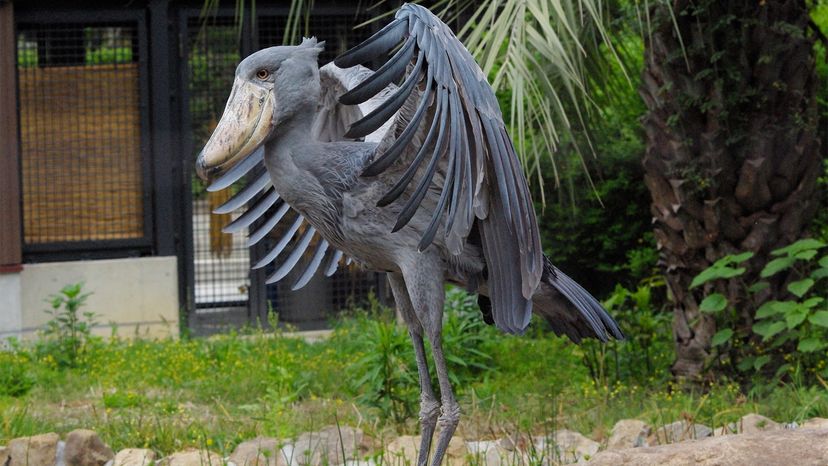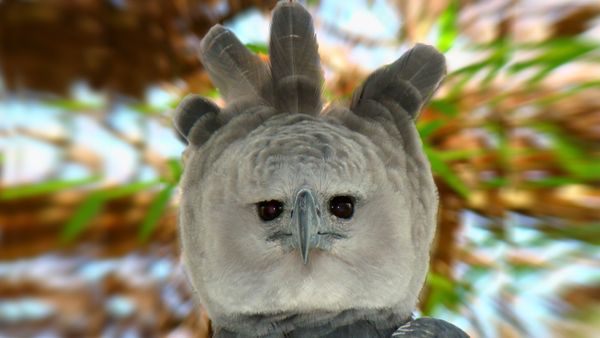
Gasp and behold the rare Balaeniceps rex. Also known as a whalehead, the breathtaking, prehistoric-looking shoebill stork has been called "the most terrifying bird in the world," "Monsterface" and even "Death Pelican."
Based on its morphology, the shoebill was classified with storks from the 1850s through the 1980s. However, more recent DNA research finds that shoebills are actually biochemically more like herons and anatomically more closely related to pelicans.
Advertisement
Its ZIP code is the remote marshy swamps of East Africa – from South Sudan to Zambia – so it's highly unlikely you'll ever run into this funny-slash-menacing-looking avian hybrid of Derek Zoolander and Hannibal Lecter in a dark alley near you. But if you do, no need to worry or run: It won't eat you or try to zhuzh your hair. Docile around humans, and known for its slow movements and tendency to stand still for long periods of time, it'll probably just stand there and pose with that exotic, velociraptor "je ne sais quoi" look on its unfortunate face and stare you down – giving you plenty of time to harness your inner birder and do a photo shoot – from, say, at least 10 feet (3 meters) away.
Weighing anywhere from 12 to 15 pounds and standing up to 5 feet (1.5 meters) tall with a wingspan that can reach 8 feet (over 2 meters), this steely-eyed, aloof and gawky bird hangs out in reedy wetlands where it can nosh on its favorite foods, namely lungfish, tilapia, catfish, frogs, snakes, monitor lizards and baby crocodiles – all of which it can snatch and swallow whole or tear through and decapitate easily with its badass, hollow, pelican-like 7-inch (18-centimeter) beak.
A monogamous bird that can live up to 35 years, the shoebill finds its mate at a young age and aggressively defends its partner against rivals. Both partners participate in building their nest, which is a kind of floating barge that can be as large as 10 feet wide (3 meters) and 9 feet (almost 3 meters) deep. While the momma shoebill will lay two or three eggs, only one chick will survive, as the eldest offspring has a Darwinian dark side and, alas, kills its siblings.
Stoic loners – there are only about 3,300 to 5,300 individuals left in the wild – the shoebill stays mainly in its own bailiwick, flying (a mere 150 flaps per minute) anywhere from 500 to 1,000 feet (152 to 305 meters) at a time, with most flights in the 65-foot (20-meter) range. Fierce in the wild, the dauntless shoebill has been known to fight Nile crocodiles (one of the largest crocodiles out there) to get to their delicious babies, and to fraternize with hippos whenever possible, as the sheer enormity of hippos forces yummy shoebill snacks to the water's surface.
They don't say much, in fact they're mute most of the time, but when they clatter their bills upon running into another shoebill, or if it's mating season, duck for cover: It sounds just like a machine gun. For real.
And now for the punchline: This crocodile decapitating, machine gun impersonating, feathered goliath is also a leg defecator. Yep, they poop on their own legs. Liquid stool keeps the shoebill cool.
Anybody got a problem with that?
Advertisement
